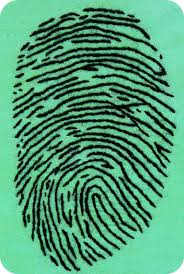Cloud Biometrics: Conveniently Safeguarding Our Data For The Future
The definition of cloud computing is recognized as a model that enables ubiquitous, convenient, on-demand network access to a broad number of computing resources, such as: storage, networks, servers, services, and applications that can be provisioned quickly and released with little to no interaction from service providers and minimum management effort. Cloud computing is a field of computer networking which is presenting opportunities to use infrastructure, hardware, or application as a service. Organizations and companies are looking into cloud computing for its cost effectiveness, security options, and as a reasonable solution for their needs. It should be noted, using a third party for cloud services does raise some security concerns as well.

The Bloomberg survey includes information from their data room that concludes cloud computing will bring forth roughly $270 billion by the year 2020. Advantages in certain areas like flexibility, mobility, and lowered costs are key reasons the amount of cloud users will jump in number with immediate growth in the next few years. Advances in cloud computing recently have made even the heaviest of tasks easy to access and readily available to mobile devices. Recent research by a New York-based firm show studies of more than 240 million businesses using cloud services through mobile devices during 2015. The momentum is likely to push mobile cloud computing revenue to $5.2 billion.
Major companies have made the shift in anticipation and doing their best to stay at the forefront in these advancements and changes. In March 2015, Samsung laid claim to license SRI’s iris solution, implementing everything into their handheld Samsung Galaxy Tab Pro 8.4 tablet. Other major smartphone manufacturers including HTC, Sony, and Apple were already bringing biometrics applications such as fingerprint and voice in the picture with their next projects. As the market sees this increase in devices that make use of biometric technology, adopting biometric technology for security on clouds will become easy for users. Biometric and cloud computing in mobile devices allows users more convenience. Users will be taking their data out of homes and offices, filing it away in their pockets and having access to it at any moment during the day.
Add into the equation available online channels, other consumer conveniences, the constant advancement of hackers, it is not hard to see that biometric technology will be a competitive component between corporations. Insurance companies are shaking things up as well, constantly building on their consumer services. In the eyes of insurers’ focusing on the risks and chances of loss, the majority will quickly agree that biometric security is an investment without question. Insurance companies brought in new channels for claimants to be identified, and this biometric solution is a significantly efficient tools against fraudulent claimants. For example, using facial recognition through mobile devices and online services would recognize fraudulent activity from a database, saving insurance companies millions of dollars and allowing the reduction of policy costs.

Biometric technology supports healthcare insurers data integrity standards, directly with policies set by the Health Insurance Portability and Accountability Act (HIPAA). Here’s another example: Other than following the requirements for automatic logoff and user identification, insurers must increase the number of safeguards such as PINs, passwords and some methods that include biometrics. An area where we can easily see biometrics has shown impact is healthcare insurance. In 2014, the Ponemon Institute conducted a study which showed almost 1.5 million Americans suffered at the hands of medical identity theft. It is estimated that healthcare fraud costs somewhere between $70 billion and $255 billion a year, roughly a tenth of the total cost of healthcare. The use of biometrics eliminates medical insurance cards being shared between patients, which reduces billing fraud on a large scale. Basically, the alternative to paper insurance cards will be iris biometrics that will be able to scan the user’s eye and instantly send evidence of the physical presence of that user at a healthcare facility.
Aite Group’s data room report in 2012 revealed the organization estimated that claim fraud in the U.S’s P&C industry cost $64 billion that year and would end up reaching somewhere in the range of $80 billion by 2015. These hackers of the system and their tactics have directly affected customers in particular fashion. Safeguarding consumer data and information has been centered on online channels, causing fraudsters to adapt and redirect their concentration on the phone channel.
This channel is becoming an extremely difficult means for thieves to get what they want. Information gathered by social media networks is being used by thieves, who deceive call center representatives in order to collect the information. Solving these issues that are urgent and need immediate interference will cause companies to rely heavily on biometrics and the capabilities therein. Cross referencing inbound calls against documented fraudsters, representatives will be able to compare and identify the unique patterns of voice prints. Advanced biometric methods can also identify fraudulent patterns based on the analytics of a person’s speech, talk patterns, and various other means of measuring vocal capabilities within people.
While thieves and fraudulent claimants have made their moves and try to stay ahead of the curve, ultimately biometrics have proven to be much more beneficial in stopping criminals and protecting the people instead of being in favor of those with evil intentions. Obviously, with the use of mobile devices, the convenience and instant gratification will continue to be enjoyed by the majority of people as corporations continue to develop and produce advancements in technology.
Author: “Gabriel Cabot is a digital strategist who enjoys reading, writing and learning about new technologies, programming, and the Internet.”











